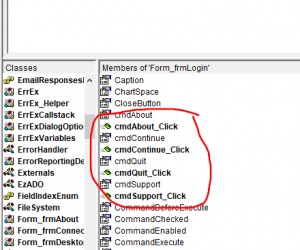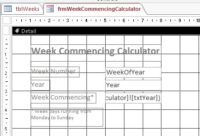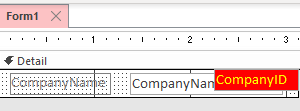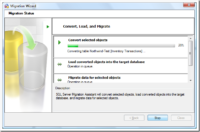It is very common for us to embed some kind of logic based on a lookup table or in some cases, a column of a table. Because we have application logic connected to it, the code are fragile and subject to changes as the requirements develops. We want to avoid this situation where we might…
Prefer compile time errors over run time errors
In VBA, there are several features that allow us to do things that may not be checked at the compile time. In particular, it is possible to write several late-bound expressions which means that it can potentially contain run-time errors. One common misconception about late-binding is that it’s a matter of adding a reference and…
Access DateValue() function to SQL Server equivalent
What is the SQL Server equivalent to Access DateValue() function? Access SQL DateValue([Event Timestamp]) SQL Server Equivalent cast([Event Timestamp] as date) convert(date, [Event Timestamp])
Access InStr() function to SQL Server equivalent
What is the SQL Server equivalent to Access InStr() function? TargetField: String expression being searched SearchValue: String expression being sought StartPosition: Starting position for each search (optional) Access SQL InStr(TargetField, SearchValue) InStr(StartPosition, TargetField, SearchValue) SQL Server CHARINDEX(SearchValue, TargetField) CHARINDEX(SearchValue, TargetField, StartPosition)
Using Custom Functions in Calculated Controls
Custom functions work the same way as MS Access built-in functions such as DateAdd, DatePart and DSum, but are instead created ourselves as database developers. We do this by creating a public function with the VBA programming language and save it inside a global module within the database. Today I am going to explain how custom functions can be…
Use controls, not fields
Sometimes we need to use fields from a RecordSource that aren’t shown on the form. It is legal to reference them directly even if they don’t have a control. For example, we can have a form bound to a RecordSource like so: SELECT c.CompanyID, c.CompanyName FROM Companies; And only display CompanyName in a textbox but…
IS NULL: Understanding and Using the Null Value in Microsoft Access
In Microsoft Access, a null value is a value that is not assigned or unknown. When working with databases, it’s important to understand how to use and identify null values in order to ensure accurate and efficient data management. The IS NULL operator is one of the most useful tools for working with null values…
Hiding the Navigation Pane with VBA
Once you have created an Access Database Application to be used by other people, it may well be important for you to prevent users from gaining access to any of its design features. By this I mean, you may not want users to modify your tables, forms and queries etc in design view (inadvertently or…
How to Migrate Data from Access to SQL Server using SSMA (SQL Server Migration Assistant)
SSMA is used to migrate Access databases to SQL Server. This tool converts the Access database to an SQL Server or an SQL Azure database. It is not bundled with SQL Server – you will need to download and install this tool separately. Check your system requirements and view the installation procedure for SSMA. Preparing…
Access 2003 Technical Articles
In this section of the MSDN Library, you’ll find technical articles that demonstrate how to build and deploy complex Access 2003 runtime-based solutions, automate Access from another application; use the new XML features in Access 2003, and even how you can animate Access 2003. You can use the TOC to your left to navigate through…






